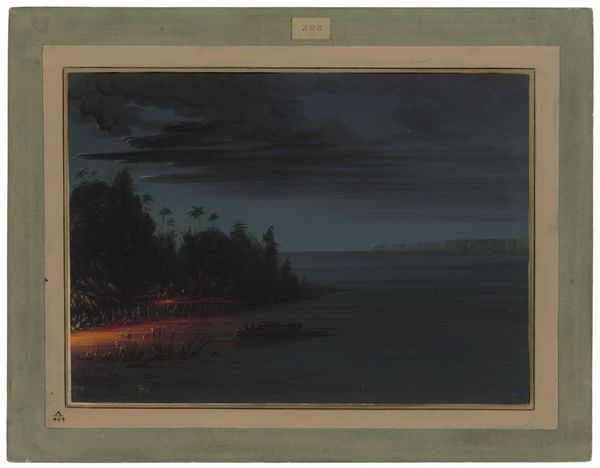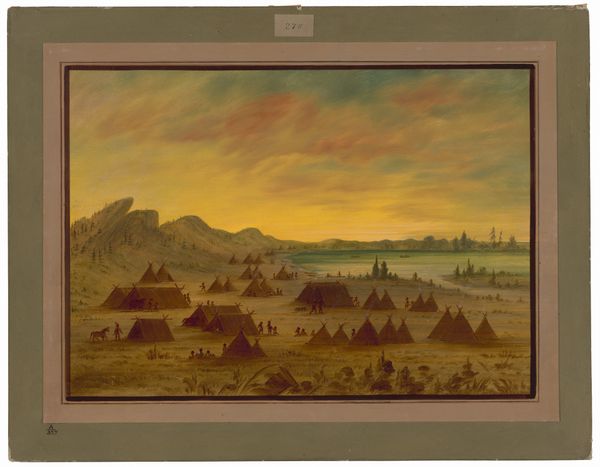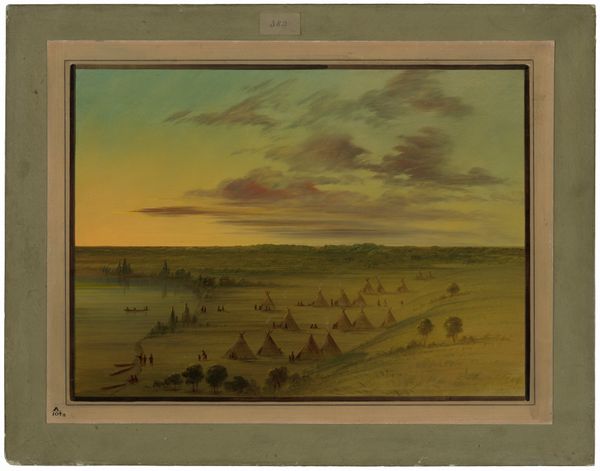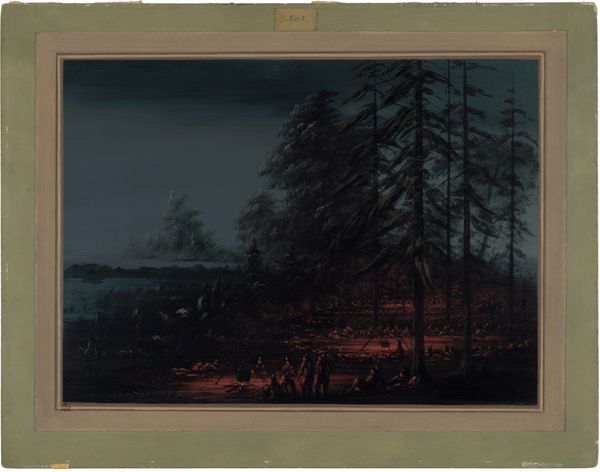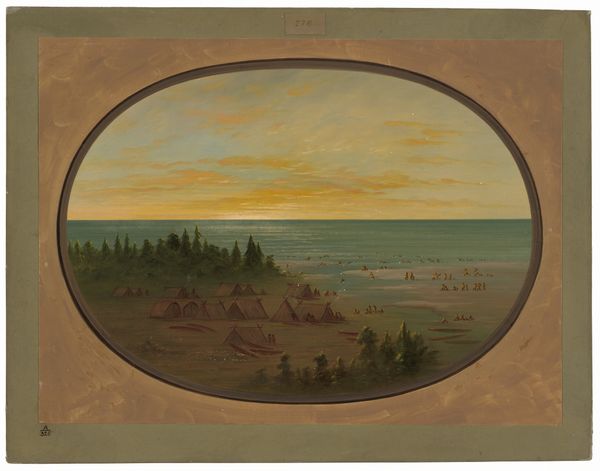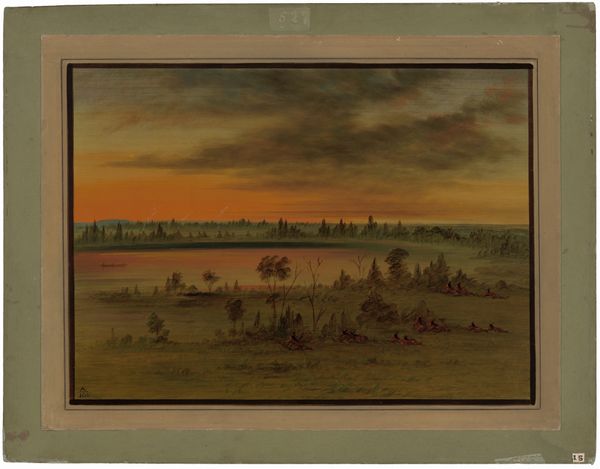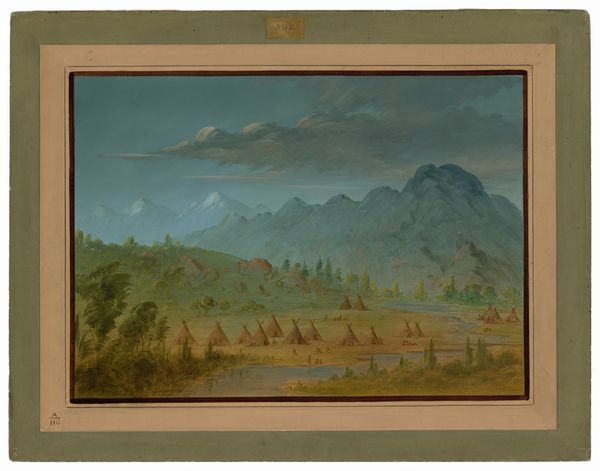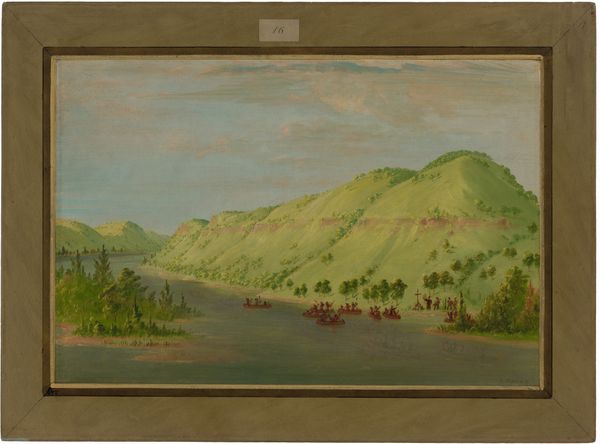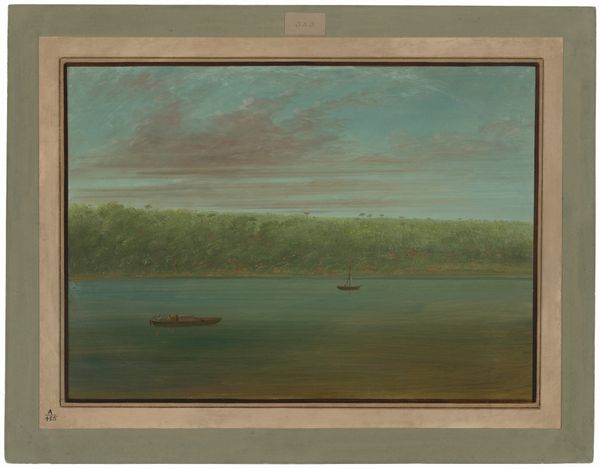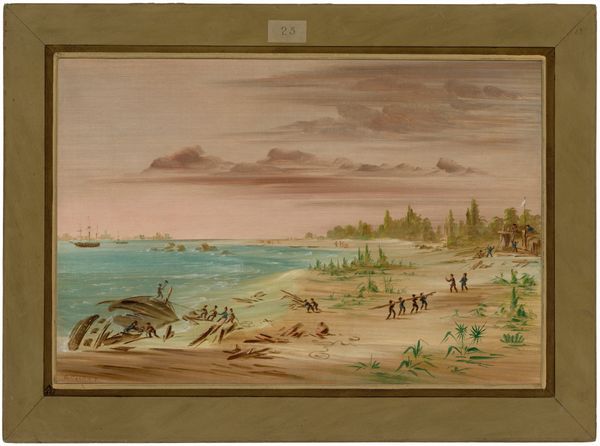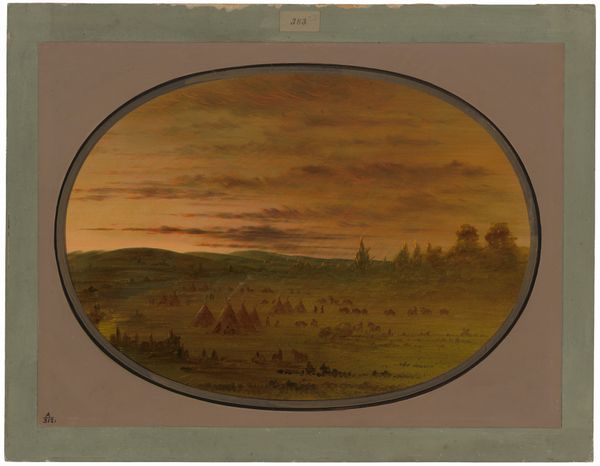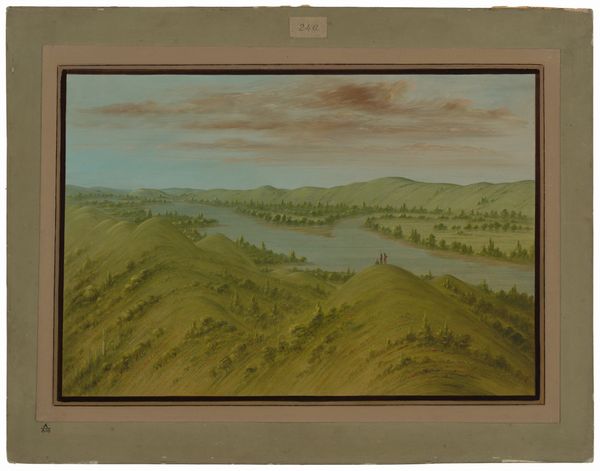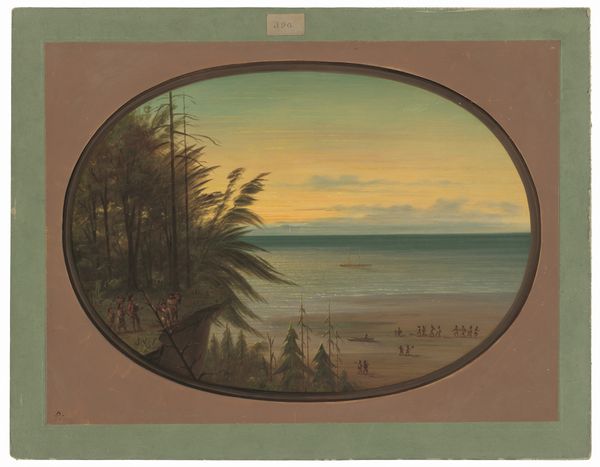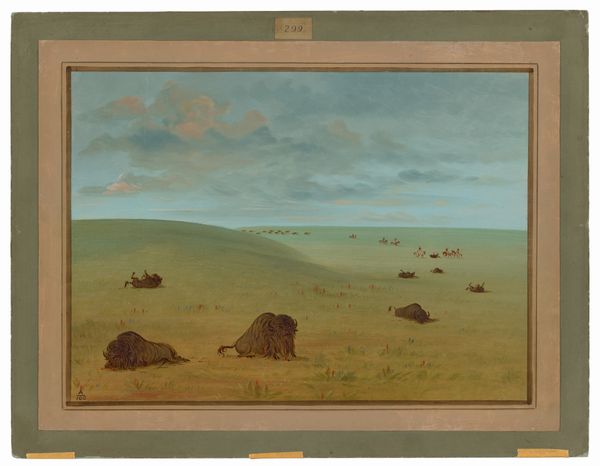
Dimensions: overall: 47 x 62.8 cm (18 1/2 x 24 3/4 in.)
Copyright: National Gallery of Art: CC0 1.0
Curator: Look at this evocative watercolor by George Catlin, likely created between 1855 and 1869, titled "Nayas Village at Sunset". Editor: My first thought? It’s beautifully serene, almost melancholic. The golden sunset, the vast ocean, and then you notice the detailed figures in the village, tiny under that sky. Curator: Absolutely. Catlin's work often documented Indigenous life, though filtered through his own lens, of course. Considering the social context of westward expansion at the time, how do you see this piece functioning as a visual record, or even a political statement? Editor: It’s hard to ignore the romanticized portrayal. The sunset creates a harmonious scene, perhaps masking the realities of colonization and displacement these communities were facing. Look closely, the way the tents and canoes are rendered emphasizes their handmade quality. Curator: Right. The watercolor medium itself—so portable and immediate—speaks to the circumstances of its creation, perhaps capturing fleeting moments and experiences. We could also ask, for whom was Catlin creating this imagery, and how was it received back in America or even in Europe? The appeal, no doubt, stemmed partly from its picturesque qualities. Editor: Precisely. While documenting, Catlin was also undeniably participating in the romantic idealization of Indigenous people as somehow 'other' or 'vanishing'. The setting sun only strengthens that impression. Its display in galleries likely reinforced prevailing social views of the era. Curator: A compelling point. Considering that the sunset provides such dominant emotional undertones to the watercolor, can this emphasize the importance of temporality and changing landscapes, when documenting historical visual cultures. It asks how we perceive both labor, value, and documentation across an ever changing planet. Editor: The visual storytelling definitely evokes multiple layers of history and artistry. It is crucial to ask whether the material circumstances allow to understand more widely this piece to document Indigenous communities or simply aestheticized versions of the 'dying' people during the 19th-century expansionism. Curator: I think examining these historical and cultural contexts, allows us to further unpack how we assess a narrative in art through its medium, message, or presentation. Editor: I completely agree, what an exciting insight into the piece, exploring a more balanced dialogue from romantic aesthetic to crucial art history!
Comments
No comments
Be the first to comment and join the conversation on the ultimate creative platform.
